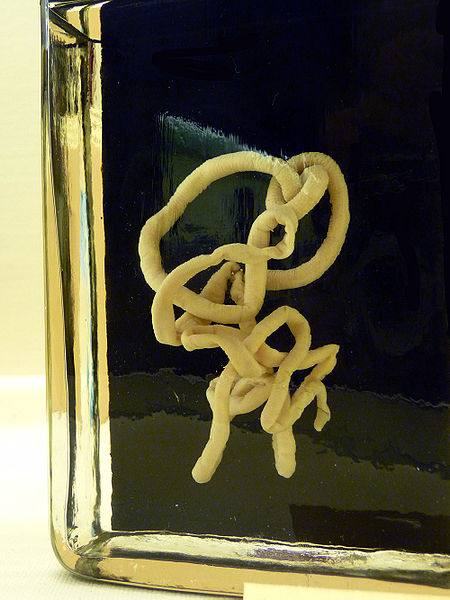Post by Deinobrontornis on Oct 29, 2011 19:40:01 GMT -5
[a href="Bootlace Worm - Lineus longissimus"]Bootlace Worm - Lineus longissimus[/a]

The bootlace worm (Lineus longissimus) is one of the longest known animals, with specimens up to 50 meters (160 ft) long and up to 10 centimeters (3.9 in) wide being reported. Its mucus is toxic.
Taxonomy:
The bootlace worm is in the phylum Nemertea or ribbon worms. It is the most common nemertean found along the coasts of Britain.
Description:
They may grow as long as 60 meters (200 ft), which would make it the longest animal in the world. They are however usually only 5 to 10 millimeters (0.20 to 0.39 in) in width. The body is brown with lighter (longitudinal) stripes. Its mucus contains a relatively strong neurotoxin which it uses as a defense against predators.
When handled it produces large amounts of thick mucus with a faint pungent smell. A specimen washed ashore in the aftermath of a severe storm by St Andrews, Scotland, in 1864, had a length of more than 55 metres (180 ft), longer than the longest known Lion's mane jellyfish, the animal which is often considered to be the longest in the world. However records of extreme length should be taken with caution, because the bodies of nemerteans are flexible and can easily stretch to much more than their usual length.
Like other nemerteans, Lineus longissimus feeds using its eversible proboscis. As it is in the class Anopla, their proboscis is not armed with a barbed stylet. Instead they have a cluster of sticky filaments at the end of their proboscis that they use to immobilize prey.
Habitat:
Lineus longissimus can be found on sandy shores, muddy shores, and in tide pools.


The bootlace worm (Lineus longissimus) is one of the longest known animals, with specimens up to 50 meters (160 ft) long and up to 10 centimeters (3.9 in) wide being reported. Its mucus is toxic.
Taxonomy:
The bootlace worm is in the phylum Nemertea or ribbon worms. It is the most common nemertean found along the coasts of Britain.
Description:
They may grow as long as 60 meters (200 ft), which would make it the longest animal in the world. They are however usually only 5 to 10 millimeters (0.20 to 0.39 in) in width. The body is brown with lighter (longitudinal) stripes. Its mucus contains a relatively strong neurotoxin which it uses as a defense against predators.
When handled it produces large amounts of thick mucus with a faint pungent smell. A specimen washed ashore in the aftermath of a severe storm by St Andrews, Scotland, in 1864, had a length of more than 55 metres (180 ft), longer than the longest known Lion's mane jellyfish, the animal which is often considered to be the longest in the world. However records of extreme length should be taken with caution, because the bodies of nemerteans are flexible and can easily stretch to much more than their usual length.
Like other nemerteans, Lineus longissimus feeds using its eversible proboscis. As it is in the class Anopla, their proboscis is not armed with a barbed stylet. Instead they have a cluster of sticky filaments at the end of their proboscis that they use to immobilize prey.
Habitat:
Lineus longissimus can be found on sandy shores, muddy shores, and in tide pools.



